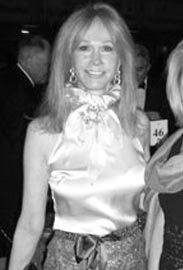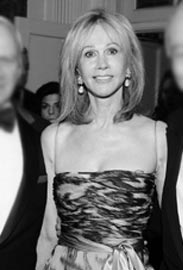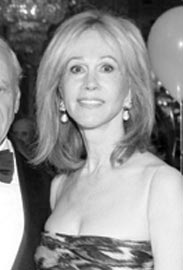Are you If not, could you forward this site to this person? |
|
 |
 infomore |
I have done this site especially for Jeanne Siegel |
 |
 |
 |
Sorry for my poor english translation.
Jeanne is wife of Herbert Siegel.
Herbert bought 21% stake in struggling Warner Communications in the early 1980s; made windfall with Time Inc. merger. Formed United Paramount Network with Viacom, lost $800 million in 5 years. Sold parent company Chris-Craft to Rupert Murdoch's News Corp. for $5.3 billion 2001.
-----
The term means of communication (from Latin medius), refers to the instrument or form of content which makes the communication process and communication. Usually the term is used to refer to the mass media (MCM, mass media or mass media), but other media such as telephone, are not massive but interpersonal.
The media are constantly changing tools. Most likely the first form of communication among humans was that of the signs and signals used in prehistory, one which reflected in material culture are different manifestations of prehistoric art. The appearance of writing is taken as a milestone in history began. From that moment, the economic and social changes were driving the birth and development of various media, from those related to writing and mechanization (print-fifteenth century-) to the media linked to the age of electricity (first half of the twentieth century) and the revolution in information and telecommunications (scientific-technical revolution or third industrial revolution, since the second half of the twentieth century-), each of which are essential for the different phases of the so-called process of globalization .
---
-> Site for Jeanne Siegel
Important Dates
XIV century: the invention of printing (possibly by Johannes Gutenberg in 1).
1605: Johann Carolus published the first newspaper in Germany Relation aller gedenckwürdigen Fürnemmen und Historien.
1833: Rodolphe Töpffer publishes comic album Histoire de M. Jabot, to be followed by six others. His Essay on physiognomy, 1845 is considered the first theoretical text in the middle.
1877: Telephone; The phone was jointly created by Alexander Graham Bell and Antonio Meucci.
1895: The comedy, the Lumière brothers publicly out of a French factory workers in Paris.
1896: Guglielmo Marconi received the first patent the world on the radio.
1896: Alexander Stepanovich Popov with a full-issuance of receipt of telegrams, sent the first telegraph message between two buildings at the University of St. Petersburg at a distance of 2 m.
----
-> Site for Jeanne Siegel
Purposes
The main purpose of the media is precisely communicate, but according to his kind of ideology can specialize in, inform, educate, transmit, entertain, form opinions, to teach, control, and so on.
Features
Positive. The positive features of the media are that they allow large information content extended reach places on the planet immediately. The media, likewise, enable many personal relationships remain united, or at least not completely disappear. Another positive factor is given in the economic field: who owns the use of the media can generate a certain kind of consciousness on a kind of product, ie, can generate its own demand, since the media often play the role of trainers opinion. Then, seen from the business, is a largely positive aspect by allowing the marketing and advertising for the world.
Negative. The negative features fall in handling information and using it for self-interest of a specific group. In many cases, tend to form stereotypes, followed by many people, using the scope that takes the message to its diffusion (as individuals or groups to generalize).
-> Created for Jeanne Siegel
Classification
Due to the complexity of the media, Harry Pross (1972) has separated these into three categories based on their technical level. In 1997 Manfred Fassler contributed a new category and are thus classified as follows:
Primary means (own resources) are linked to the human body. They do not need the use of any technique for communication, which in turn is synchronous. Examples: Narrator, Cura, Theatre.
Secondary means (machines) require the use of techniques (technologies) on the side of content creators. The receiver of the information does not need any device to decode the information. Examples: Newspaper, magazines.
Tertiary media (electronic) require the use of techniques (technologies) on the side of content producers and recipients. Examples: telegraphy, television, music CDs, etc..
Quaternary media (digital media): Allow both synchronous and asynchronous communication (interaction). Require the use of techniques (technologies) on the side of content producers and recipients. The division of the latter (producer and receiver) tends to disappear, and the time and distance. Quaternary media or digital media are part of the New Media.
----
-> Site for Jeanne Siegel
Cartoon
The cartoon, which became the mass media through the evolution of the press nineteenth-century golden age in the number of readers after the Second World War. With the proliferation of new forms of leisure in the second half of the twentieth century away from being a mass medium in most countries, creating more expensive formats, such as albums or magazines luxury and looking for new types of readers.
Phone
The phone is a device designed to transmit electrical signals through the conversation two people at once. The phone was jointly created by Alexander Graham Bell and Antonio Meucci in March 1877.2
Radio
Radio is a technology that enables the transmission of signals by modulation of electromagnetic waves. Electromagnetic its scope it was much easier to reach faraway places. Correspond to the type of sound. Is an "audio-only" who is currently recovering his popularidad.Según Lamb, Hair and McDaniel, listening to radio has grown parallel to the population mainly because of its immediate nature, laptop, which meshes so well with a fast lifestyle. Moreover, according to the mentioned authors, listeners tend to turn the radio on a regular and predictable schedules. The most popular times are the "hours of driving," when you are on your vehicle are a vast captive audience. Its main advantages are: Good local acceptance; high geographic and demographic selectivity;. It is also quite inexpensive compared with other media and is an adaptable, ie the message can be changed quickly. Its main limitations are: audio only, exposure ephemeral low care (the middle half-heard) fragmented audiences.
-> Site for Jeanne Siegel
Movies
The film was a step in the creation of mass media. Correspond to the visual type. It is an audiovisual medium that allows mass to reach a wide group of people "captive" but a low selectividad.Sus advantages are a captive audience and sharper color ads. Its disadvantages are: very selective in terms of gender, age and socioeconomic status.
TV
A model of TV
The word "television" is a hybrid of the Greek word "Tele" (distance) and the Latin "visio" (vision). The term refers to television all aspects of broadcasting and programming, which seeks to entertain and inform viewers with a variety of different links programas.La television ads that people use to keep informed of all the events.
Internet
Internet is a method of networking computers deployed in a set of protocols called TCP / IP and ensures that heterogeneous physical networks function as a network (logical) one. It makes its first appearance in 1969, when ARPAnet makes its initial connection between three universities in California and one in Utah. He has had the biggest expansion in relation to their young age compared to the extension of this medium. Their presence throughout the world makes the Internet a mass medium, where everyone can learn various topics in the editions of the newspapers, or write according to their ideas on blogs and audiovisual material fotologs or raise as in the popular YouTube site. 4 Some say this makes them key players in the Internet's own usuarios.
-> Site for Jeanne Siegel
Private interests of media
One of the criticisms of the mainstream media is their subordination to powerful business groups. In some countries, economic groups are owners of large media, such as Grupo Clarín in Argentina, Televisa in Mexico, national television (TVN) in Panama and Grupo Prisa (Spain).
Thus, according to economic, political and social, multimedia is used to achieve objectives that transcend the communication objective.
As a way to counter this subordination to private interests, information networks have emerged calling themselves "independent" non-profit groups and volunteer-based. Among the best known is Indymedia.
-> Created for Jeanne Siegel